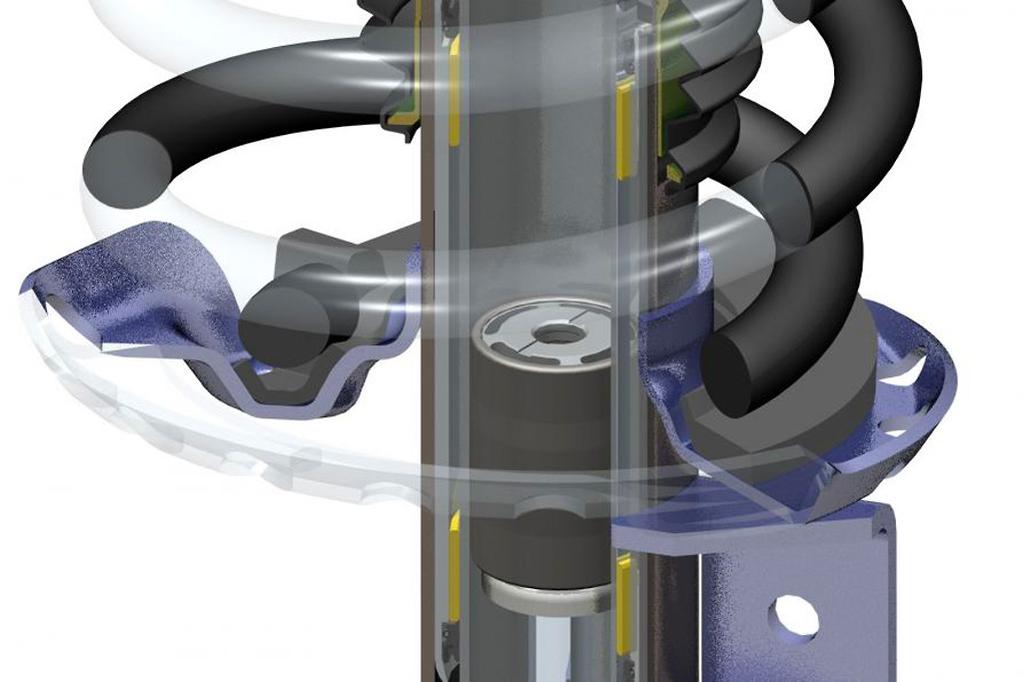We explain one of the world’s most sophisticated suspension systems, as seen in Ferrari’s and HSV’s GTS
Although overall suspension design hasn’t changed much over the years, some components have evolved to become highly sophisticated.
Magnetic Ride Control
One such component is the damper (shock absorber), and arguably none is as technically advanced as the Magnetic Ride Control damper system.

How does it work?
Magnetic Ride Control is an electronically controlled, automatically adjusting damper system.
Originally developed by the Delphi Corporation for General Motors (and called MagneRide in GM products), the key ingredient is the fluid within the damper, called magneto rheological (MR) fluid.
MR fluid has magnetically soft particles suspended in a synthetic hydrocarbon fluid. The particles are tiny — between 1 and 20 microns.
MR fluid undergoes a change in viscosity when exposed to magnetic energy. Without any magnetic energy applied, the fluid is a free-flowing thin-viscosity substance.

Magnetorheological fluid operation
When an electrical charge is released in the liquid, it thickens and can become an almost gel-like substance.
The mono-tube MRC damper doesn’t have valving like a conventional damper to restrict the flow of fluid — it simply has small tubes through which the fluid passes.
There are no moving parts; the ‘valving’ as such is contained in the MR fluid itself, activated by a magnetic coil within the damper.The system has three basic elements – the MR-filled MRC dampers, a vertical motion sensor at each wheel and an electronic control unit.
The wheel motion sensors gather information from each wheel and send it to the ECU. The ECU then sends the appropriate amount of current to each damper, increasing or decreasing the viscosity of fluid as required.

Even though it’s a reactive system, it’s quick – MR fluid’s response time when magnetised is less than five milliseconds, and has an operating range of between -40 to 130 degrees C.
The damper’s MRC fluid will thicken up – and so give firmer damping – during fast cornering or braking, as well as allowing a quicker recovery over bumps taken at speed.
Earlier versions of MRC had a single magnetic coil within the damper assembly to induce a magnetic field. Engineers found that the coil was quick to thicken the MR fluid, but wasn’t as quick to deactivate the fluid.
Second-gen MRC dampers were fitted with a second magnetic coil to speed up the process of returning the MR fluid to a lower viscosity.
MRC was developed by Delphi, an automotive supplier founded by GM in 1994. Delphi became fully-independent in 1999 and promptly went bankrupt in 2005.
The company, including its proprietary technologies such as MRC, was then bought by the current owner, a Chinese company called Beijing West Industries.
What are the cars with MRC suspension
The fifth and last generation Cadillac Seville (1998-2004) was the first production car to be fitted with MRC, late in its production cycle. From the 2002.5 model, MRC was standard on Seville STS and an option on Seville SLS.
From there the use of this suspension grew exponentially – but instead of just forgettable American luxury sedans, it went into use globally in high-performance sedans, sports cars and even SUVs.
GM has given MRC (or to use its marketing name, MagneRide) a good run, having being used in various Cadillac sedans and SUVs since the Seville. GM has also used MagneRide in Buick, Chevrolet and GMC models.
Acura, Audi, Ferrari, Ford, Lamborghini, Land Rover, Range Rover and even HSV have since fitted MRC suspension to their cars.
The first-generation MRC didn’t offer any adjustments – the system adjusted automatically according to sensor input. The Seville’s MRC did not activate until speed reached 22km/h, resulting in a very soft ride over speed bumps, for example.
Later versions offered a level of custom adjustability. The HSV GTS, for example, has three selectable settings – Luxury, Performance and Track.
High-end technology doesn’t come cheap. The older, first-gen MRC damper replacements cost around $1000 a corner, with later versions even more expensive.
While the system is clever, there have been many reports of the earlier dampers failing, typically leaking MR fluid and requiring replacement.
Yet MRC remains arguably the world’s most advanced damper system, and has endured where other advanced dampers (such as the Toyota Electronic Modulated Suspension, with its electronically controlled damper valve system) have not.
Tesla Suspension
Tesla has not developed the relevant suspension, but there is already a company on the market that has developed and patented it, and we are the only overseas distributor, for more information please click here
